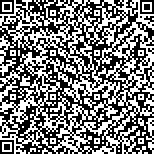舒晴,胡艳,栾春亮,等.体外冲击波治疗中重度乳腺癌相关淋巴水肿患者的疗效观察[J].中华物理医学与康复杂志,2020,42(2):166-170
扫码阅读全文

|
| 体外冲击波治疗中重度乳腺癌相关淋巴水肿患者的疗效观察 |
|
| |
| DOI:DOI:10.3760/cma.j.issn.0254-1424.2020.02.018 |
| 中文关键词: 乳腺癌相关淋巴水肿 综合消肿疗法 体外冲击波 皮肤硬化 乳腺癌淋巴水肿症状指数 |
| 英文关键词: Breast cancer Lymphadenopathy Decongestive therapy Extracorporeal shock waves Skin sclerosis |
| 基金项目:湖北省自然科学基金项目(2017CFB787);武汉大学中南医院临床研究项目(20180020) |
|
| 摘要点击次数: 5980 |
| 全文下载次数: 6693 |
| 中文摘要: |
| 目的 观察在综合消肿疗法(CDT)基础上加用体外冲击波(ESWT)对中重度乳腺癌相关淋巴水肿的疗效及对患者皮肤纤维化、上肢症状的影响。 方法 采用随机数字表法将40例中重度乳腺癌相关淋巴水肿患者分为ESWT+CDT组和CDT组,每组20例。CDT组患者给予CDT治疗,包括手法淋巴引流、短弹力绷带加压包扎或压力袖套加压治疗,每周治疗5次,共治疗4周。ESWT+CDT组患者在CDT疗法基础上辅以ESWT治疗,每周治疗2次,共治疗4周。于治疗前、治疗2周、治疗4周后分别采用周径测量法、改良Rodnan皮肤评分(mRSS)及乳腺癌淋巴水肿症状指数量表(BCLE-SEI)对患者肢体肿胀、皮肤硬化程度及患肢淋巴水肿症状进行评定。 结果 治疗2周后发现2组患者患肢体积、皮肤硬化程度及淋巴水肿症状均较治疗前明显改善(P<0.05),并且ESWT+CDT组患肢体积[(1557.36±260.86)cm3]、mRSS评分[(4.05±0.89)分]及BCLE-SEI评分[(25.20±2.21)分]均显著优于CDT组水平(P<0.05);治疗4周后发现2组患者患肢体积、皮肤硬化程度及淋巴水肿症状均较治疗前进一步改善(P<0.05),并且ESWT+CDT组患肢体积[(1305.73±211.27)cm3]、mRSS评分[(2.70±0.57)分]及BCLE-SEI评分[(13.20±2.69)分]仍显著优于CDT组水平(P<0.05)。 结论 在CDT治疗基础上辅以ESWT能进一步加速乳腺癌术后淋巴水肿患者康复进程,纠正皮肤纤维化和水肿的恶性循环,改善患肢疼痛等并发症状,该疗法值得临床推广、应用。 |
| 英文摘要: |
| Objective To observe any effect of extracorporeal shock wave therapy (ESWT) on patients with moderate to severe breast cancer-associated lymphedema (BCAL) with skin fibrosis and upper limb symptoms receiving complex decongestive therapy (CDT). Methods Forty patients with moderate to severe breast cancer-associated lymphedema were randomly divided into an ESWT+CDT group and a CDT group, each of 20. Both groups received manual lymph drainage, 5 times per week for 4 weeks with short elastic bandages or compression cuffs. The ESWT+CDT group was additionally provided ESWT (2.0 bar, 5 Hz, 2500 pulses) twice a week for 4 weeks. Limb swelling, skin fibrosis and symptoms of lymphedema were assessed using the circumference measurement method, modified Rodnan skin scores (mRSSs), and the Breast Cancer and Lymphedema Symptoms Experience Index (BCLE-SEI) before the treatment and after 2 and 4 weeks. Results After 2 weeks the limb volume, skin sclerosis and lymphedema symptoms of both groups had improved significantly, with the average limb volume, mRSS score and BCLE-SEI score of the ESWT+CDT group significantly better than those of the CDT group. After 4 weeks of treatment, the limb volume, skin sclerosis and lymphedema symptoms further improved in both groups with the ESWT+CDT group again showing significantly greater improvement. Conclusion ESWT can further accelerate the recovery of patients with lymphatic edema after breast cancer surgery receiving CDT therapy, correct the cycle of skin fibrosis and lymphedema, and relieve complications such as limb pain. It is worthy of clinical promotion and application. |
|
查看全文
查看/发表评论 下载PDF阅读器 |
| 关闭 |
|
|
|